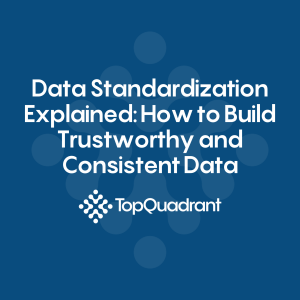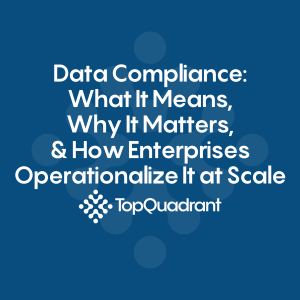Enhancing Data Interoperability in Life Sciences
In the evolving landscape of life sciences, managing and integrating vast amounts of complex data is more challenging than ever. Organizations are increasingly focused on making their digital assets findable, accessible, interoperable, and reusable (FAIR). To meet these demands, efficient data management systems play a crucial role in ensuring that information is easily accessible and accurately maintained.
The Challenges of Medical Term Management
One of the major hurdles for life sciences organizations is the lack of a standardized approach to accessing, integrating, and managing external medical terminologies. This absence of this important component to building a “semantic layer” makes it difficult to ensure data interoperability across various systems and platforms. Without a consistent method for handling these terminologies, organizations often rely on manual processes that are time-consuming, prone to errors, and resource-intensive. The result is data inconsistencies that can hinder research, decision-making, and regulatory compliance.
As the FAIR guidelines highlight, making data machine-actionable is essential in today’s fast-paced, data-driven environment. However, this is not an easy task. Organizations frequently struggle with the manual efforts required to access, transform, and update terminologies within their systems. These challenges become even more pronounced when new versions of external terminologies are released, as updating internal data collections to align with these changes can be a cumbersome process.
Automating Medical Term Management
To address these challenges, a new approach to automating and streamlining the management of external medical terminologies has been developed. This approach focuses on eliminating the manual steps associated with accessing, transforming, and integrating terminologies. By hosting terminologies on a server where they are pre-transformed and ready for use, organizations can automate the detection of dependencies on internal data collections and manage changes more efficiently when new terminology versions are introduced.
This automation not only simplifies the process but also allows organizations to focus on higher-value tasks, such as analyzing and applying data, rather than getting bogged down in the details of manual updates.
Key Benefits of Automation
- Streamlining Manual Processes: Automating the tasks involved in managing medical terminologies—such as transformation, upload, and change management—significantly reduces the time and resources required. This improvement in efficiency also lowers the risk of errors that can occur during manual processes.
- Improving Data Consistency and Accuracy: Automation ensures that data remains consistent and accurate across an organization by efficiently detecting and managing changes in terminologies. This consistency is vital for maintaining the integrity of data-driven research and decision-making processes.
- Enhancing Interoperability: Automated systems support the FAIR guidelines by making data more interoperable. When external terminologies are integrated into a unified system, organizations can more easily share and reuse data, fostering collaboration and innovation.
A Real-World Example: Managing MedDRA Terminologies
To see how this approach works in practice, consider the example of managing MedDRA (Medical Dictionary for Regulatory Activities) terminologies. MedDRA is widely used in life sciences, and its complex hierarchy must be accurately maintained.
With an automated system, a new version of MedDRA can be retrieved and integrated into the organization’s data environment in just a few steps. The system detects any dependencies within the internal data collections and suggests necessary changes, which can then be applied quickly and easily. This approach ensures that the organization’s data remains up-to-date and accurate without requiring manual intervention.
Conclusion: Moving Forward with Confidence
The ability to automate the integration and management of medical terminologies represents a significant advancement in data management for life sciences organizations. By enhancing data interoperability and consistency, automation frees up valuable resources, allowing organizations to focus on what matters most—innovation and research.
For life sciences organizations grappling with the complexities of managing medical terminologies, embracing automation could be the key to future success.
Learn More about TopQuadrant’s Medical Term Management Accelerator
-
Data Governance69
-
Vocabulary Management9
-
Knowledge Graphs44
-
Ontologies15
-
Data Fabric8
-
Metadata Management21
-
Business Glossaries6
-
Semantic Layer12
-
Reference Data Management7
-
Uncategorized2
-
Data Catalogs16
-
Datasets11
-
Taxonomies4
-
News5
-
Policy and Compliance6
-
Life Sciences6
-
Automated Operations6
-
Financial Services10
-
AI Readiness25
-
Podcasts1





